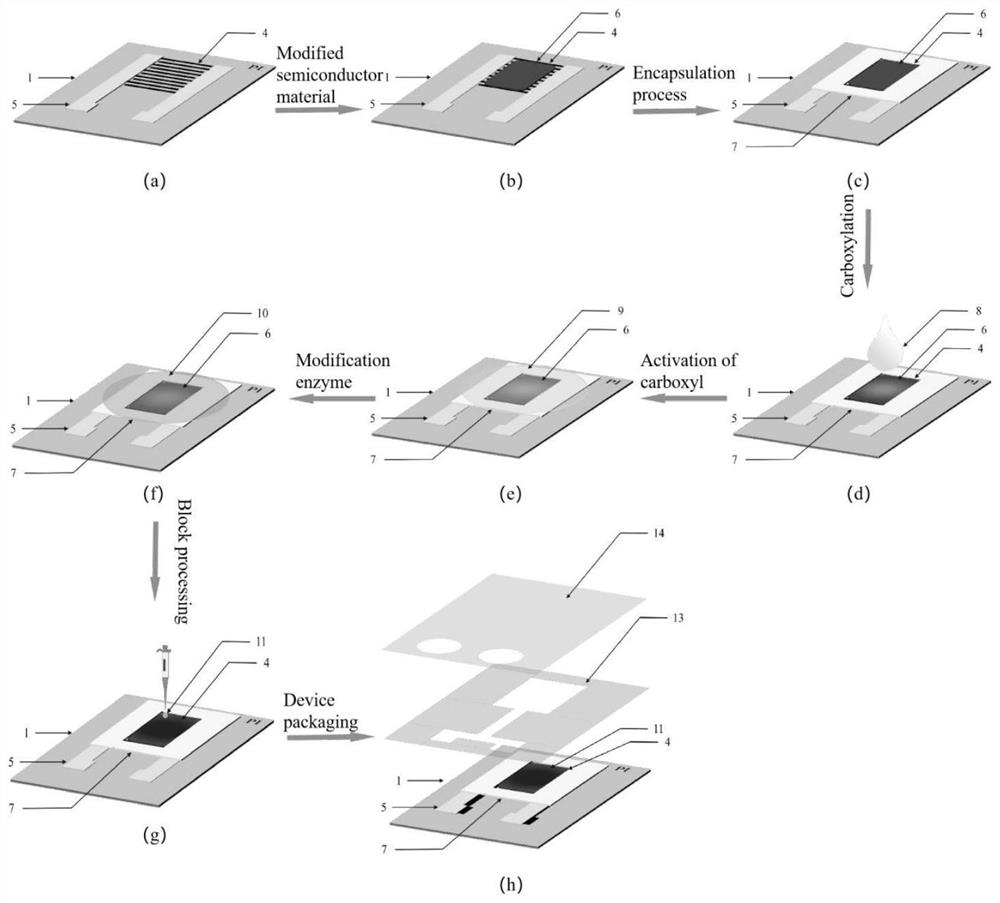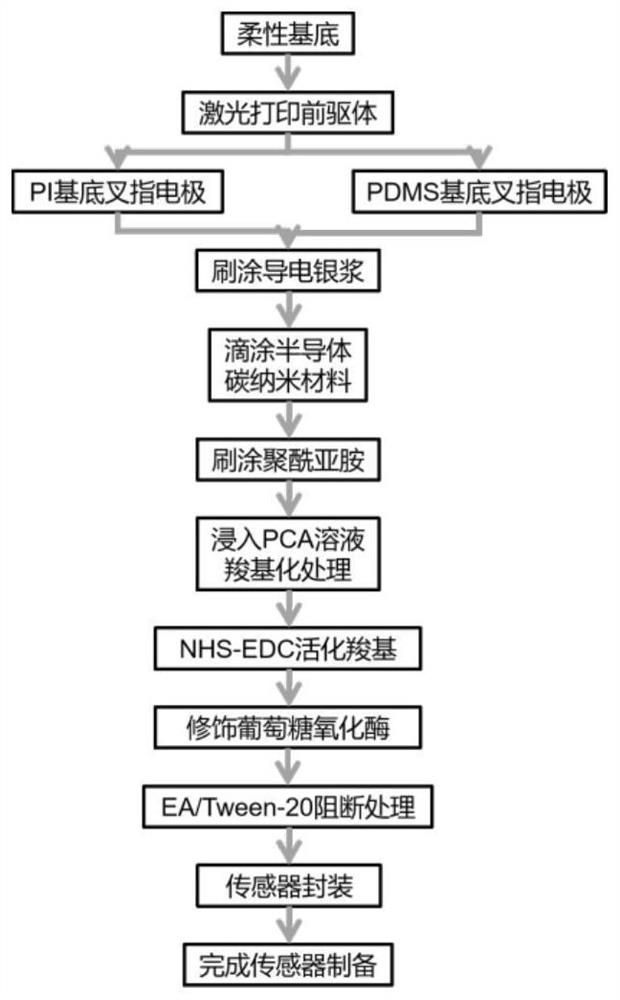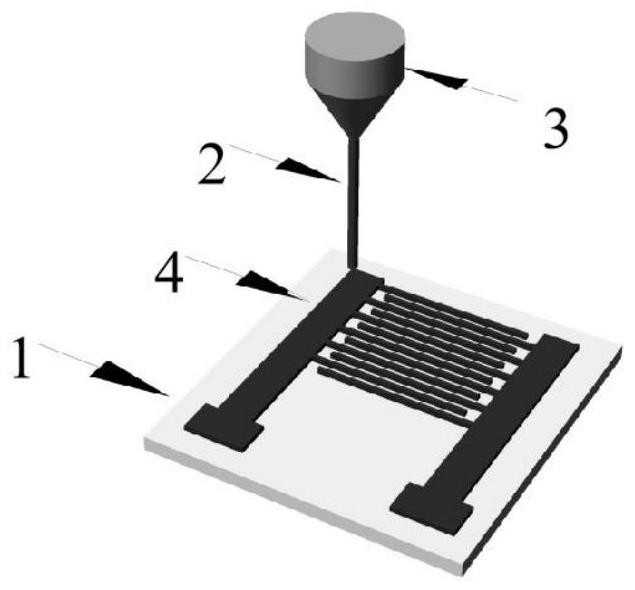Flexible glucose biosensor and preparation method thereof
A biosensor and glucose technology, applied in instruments, scientific instruments, measuring devices, etc., can solve problems such as poor stability, unsuitable for long-term use, and easy detachment of enzyme membranes, so as to achieve strong stability, avoid enzyme detachment, and enhance sensitivity sexual effect
- Summary
- Abstract
- Description
- Claims
- Application Information
AI Technical Summary
Problems solved by technology
Method used
Image
Examples
Embodiment 1
[0037] The flexible glucose biosensor of the present invention includes a flexible substrate, a graphene interdigitated electrode prepared on the flexible substrate, a semiconductor carbon nanomaterial layer, a sensing enzyme film layer, and a blocking encapsulation layer sequentially covered on the graphene interdigitated electrode , and the solid-state electrode wires arranged on both sides of the interdigitated electrodes; wherein the sensing enzyme film layer is fixed on the semiconductor carbon nanomaterial layer through chemical cross-linking.
[0038] Further, an insulating hydrophobic layer is provided around the sensitive interface of the graphene interdigitated electrode. Optionally, the flexible substrate is polyimide (PI) or PDMS. The optional interdigitated electrodes have a single finger width ranging from 200 to 450 μm, and a finger spacing ranging from 50 to 150 μm.
Embodiment 2
[0040] Such as Figure 1-3 Shown, the flexible glucose biosensor prepared by the present invention, its specific process is as follows:
[0041] (1) Interdigital electrodes
[0042] The present invention utilizes laser direct writing technology to prepare interdigitated electrodes, wherein the flexible substrate 1 is PI with a thickness of 80 μm, the wavelength of the laser 2 used in this embodiment is 450nm, the power of the laser probe 3 is 5.5W, and the scanning speed of the laser is 4cm / s. Under this laser parameter, the laser induces the precursor to form a porous graphene electrode. The parameters of the generated interdigital electrodes 4 are that the interdigital spacing is 150 μm, and the single interdigital width is 450 μm.
[0043] In the above steps, the flexible precursor is PET, PC or PVC to prepare interdigital electrodes, which can also be applied to flexible glucose biosensors.
[0044] (2) Solid electrode wire
[0045] as right figure 1 As shown in (a)...
Embodiment 3
[0061] The difference from Example 2 is that in step (1), the flexible substrate 1 is PDMS, and interdigital electrodes are prepared by PDMS transfer printing.
[0062] In the present embodiment, the thickness of the PDMS film 12 is 450 μm, such as Figure 4 As shown, the preparation process includes the following steps:
[0063] (1) Use PI substrate 1 as the precursor of laser-induced technology, with a thickness of 80 μm, and use laser 2 with a wavelength of 450 nm, laser probe 3 with a power of 4 W, and a laser scanning speed of 1 cm / s to induce porous graphene electrode. The parameters of the generated interdigital electrodes 4 are that the interdigital spacing is 50 μm, and the single interdigital width is 200 μm. Place the prepared interdigital electrode 4 facing up in the Petri dish.
[0064] (2) Coating PDMS liquid on the interdigital electrodes 4, and then curing at high temperature to form a PDMS film 12 with a thickness of 450 μm, the curing temperature is 75° C....
PUM
| Property | Measurement | Unit |
|---|---|---|
| thickness | aaaaa | aaaaa |
Abstract
Description
Claims
Application Information
 Login to View More
Login to View More - R&D
- Intellectual Property
- Life Sciences
- Materials
- Tech Scout
- Unparalleled Data Quality
- Higher Quality Content
- 60% Fewer Hallucinations
Browse by: Latest US Patents, China's latest patents, Technical Efficacy Thesaurus, Application Domain, Technology Topic, Popular Technical Reports.
© 2025 PatSnap. All rights reserved.Legal|Privacy policy|Modern Slavery Act Transparency Statement|Sitemap|About US| Contact US: help@patsnap.com



